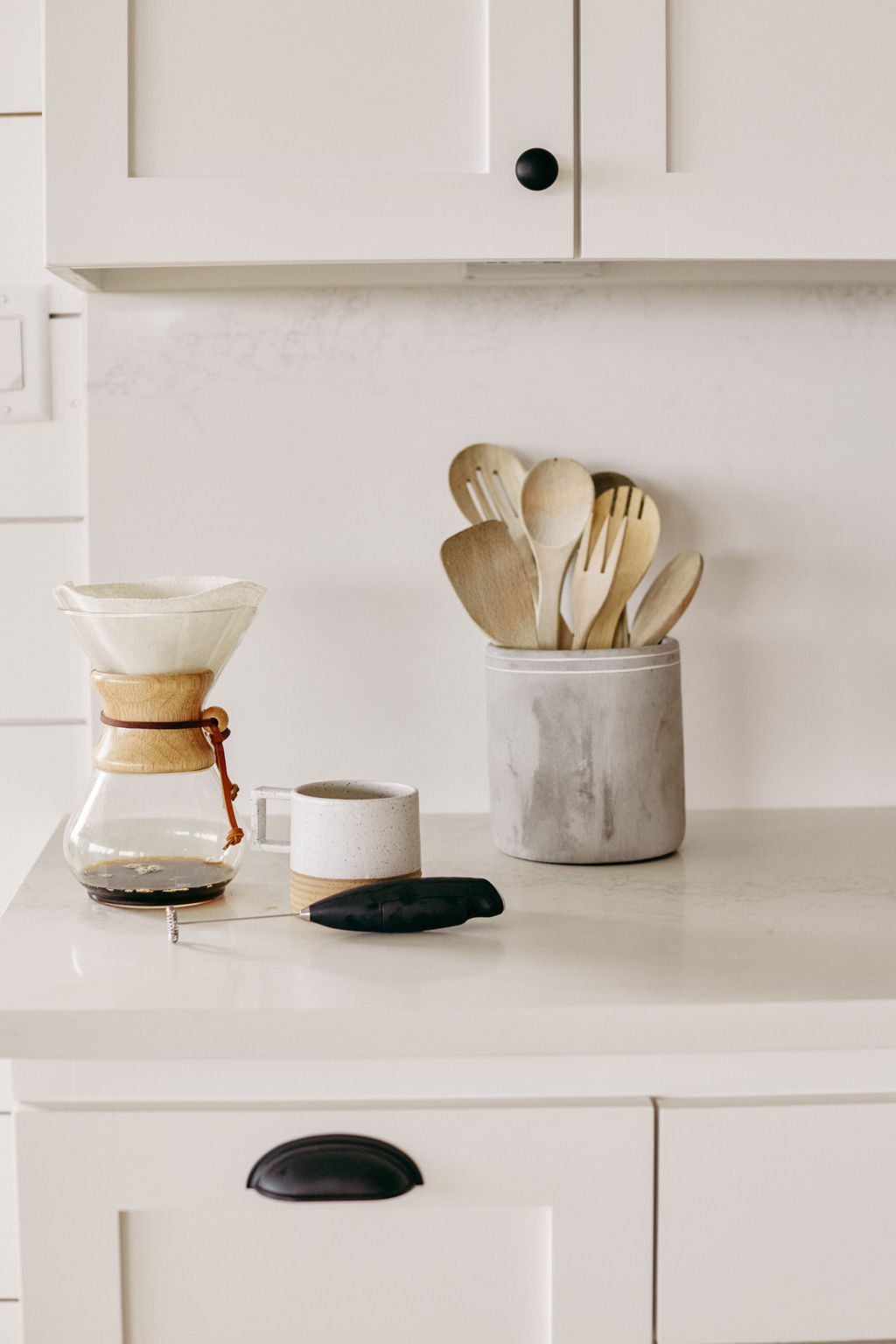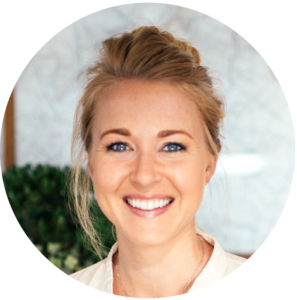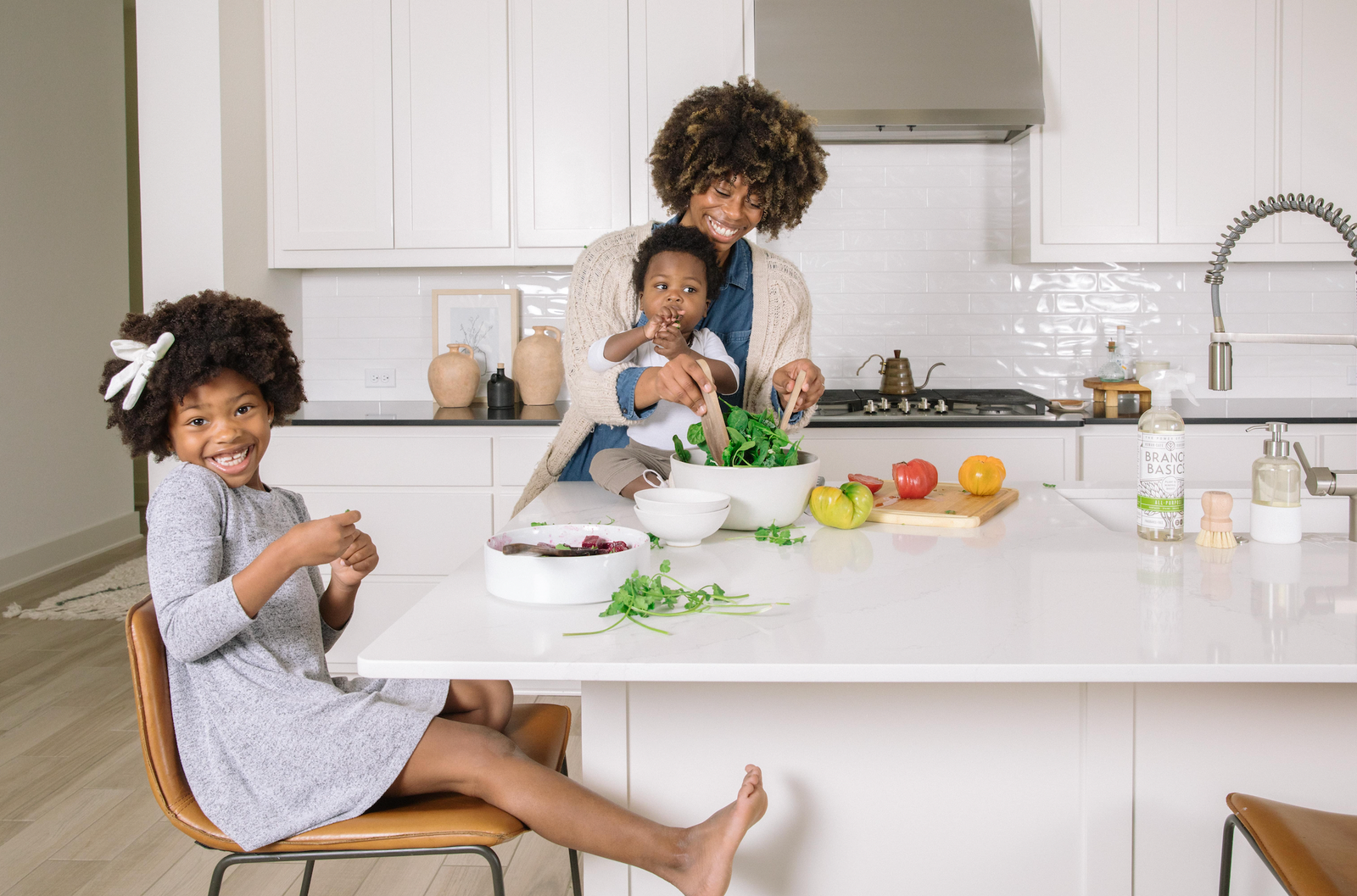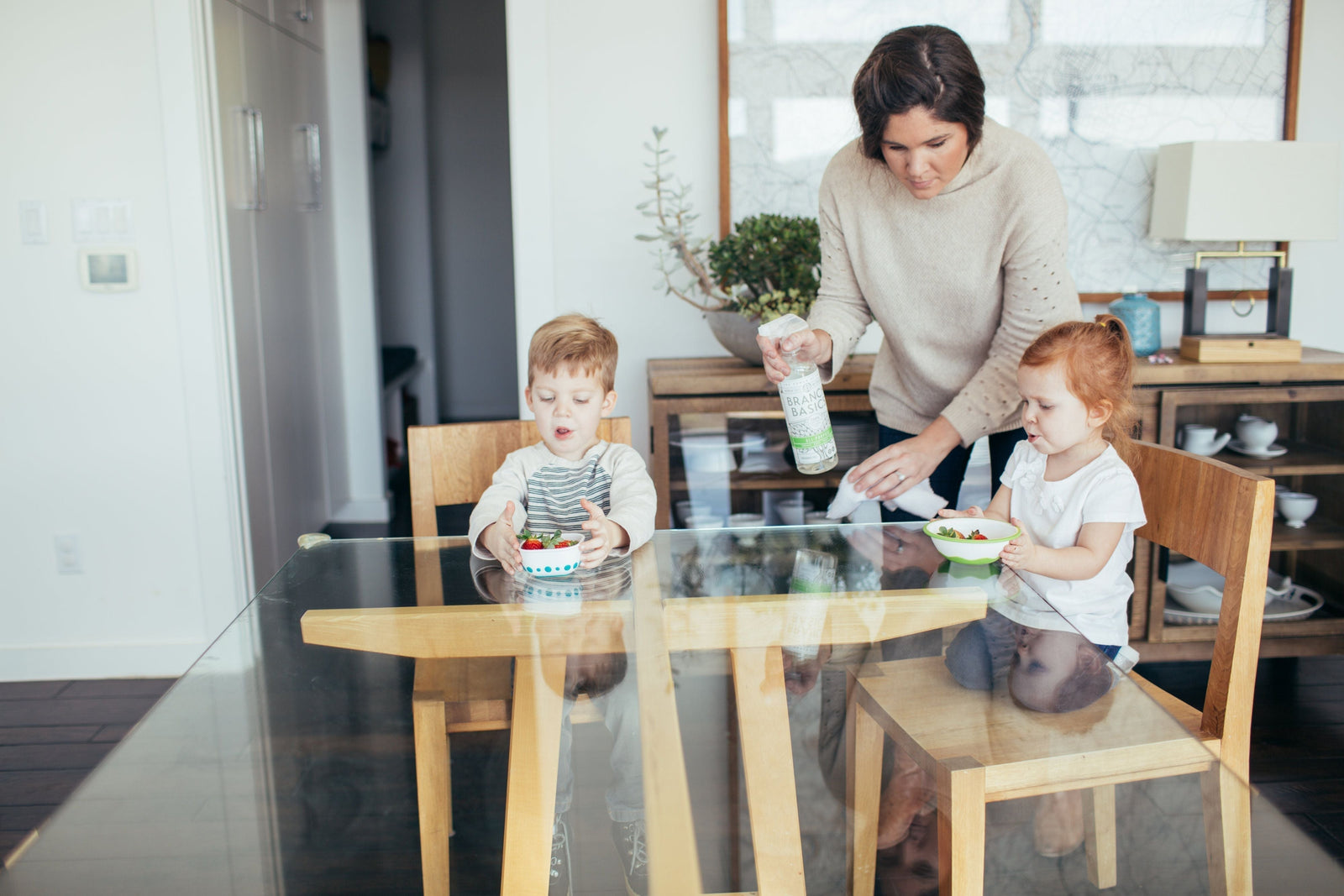Clean Coffee + Allison’s Routine

If you drink coffee (like me!), it’s likely you do it a lot - perhaps daily.
When it comes to clean living, I’m all about focusing first on the things that we’re exposed to most often, because even the smallest of changes can reap huge rewards.
While there have definitely been seasons where I’ve shelved coffee (when healing from PCOS, where I used food as medicine) or drastically limited my intake (during my pregnancies), for the most part – whether full-caff, half-caff or decaf! – it’s a steady part of my life.
And that is OKAY. Even beneficial for some when done in a clean way.
Before going on, however, I do want to say that coffee is not ideal for everyone. There may be seasons, due to health issues, that it should be avoided, and some simply don’t react well to it.
If coffee does suit you, we still recommend rotating your cup of joe with things like matcha, yerba mate, herbal teas, etc. every once in a while. Variety is truly the spice of life, and it’s always best to give your body an array of options!
When it comes to coffee, we are potentially exposed to two areas of toxins: from the coffee beans themselves and from the method by which the coffee is made.
Basically, how clean is our coffee...and how clean is the coffee-making process?
So, pour a hot cup, and let’s break down these two areas...and then I’ll give you a glimpse of my morning coffee routine.
Coffee Beans
Most everyday coffee beans contain mycotoxins, a toxic fungal also known as the class of chemicals ochratoxin A, which are damaging compounds created by mold on coffee beans.
The World Health Organization (WHO) states that mycotoxins health effects “range from acute poisoning to long-term effects such as immune deficiency and cancer.” This mold can make its way onto beans through a variety of means – unsanitary conditions, letting beans ferment for too long, or allowing unqualified beans in the mix.
The last point is generally why coffee “blends” are unideal, as they mix a variety of cheap beans together. While roasting kills mold, the toxins remain.
In 1989, a study found that 58% of beans reviewed were contaminated – and in 1995 a similar study found 52% of sampled beans were contaminated.
Let’s think about that; it’s not usually caffeine that makes us feel jittery and emotional (although this can be a sign that coffee isn’t good for someone). These symptoms are also well-known side effects of toxic mold. That “brain fog” you feel after drinking coffee points to toxic exposure more than caffeine overload.
That being said, there are absolutely days that I do experience “jitters” even with clean coffee, and that can point to a sluggish liver detox pathway and/or other factors like diet and emotional state.
Ideally, avoiding ground coffee and grinding beans just before consumption is best. As soon as beans are ground the oxidation process starts.
At this time, compounds presented in coffee interact with air molecules, degrading the quality of beans and oxidizing the oil present in coffee that makes it fresh, uncontaminated and delicious. Everyday kitchen and household odors (vegetables, fruits, etc.) can infect ground coffee.
When you brew coffee immediately after grinding the beans, this problem diminishes. Keeping coffee in whole bean form as long as possible increases the resistance.
The Verdict?
Grind your own beans and make sure that the coffee beans you use are of high-quality, regularly tested and free of mold, pesticides and ochratoxins.
When you do it right, coffee truly has so many positive health benefits!
This Healthline article on 13 Health Benefits of Coffee, Based on Science reveals coffee is a wonderful source of antioxidants, essential nutrients like riboflavin (Vitamin B2) and that it can significantly boost your metabolic rate.
Studies have shown it can lower your risk of diseases like Parkinson’s, Alzheimer’s and certain types of cancer.
Brewing Coffee
Now, let’s talk brewing.
In most coffee makers, the area where the water is stored and heated is plastic – and boiling liquid in plastic is a big, huge no-no.
Plastic degrades and sheds when in contact with hot liquid, exposing toxic chemicals like bisphenol A (BPA) and phthalates.
BPAs are endocrine disruptors that can lead to a multitude of issues such as infertility and certain types of cancer, whereas phthalates (also called plasticizers) are industrial chemicals that can damage the liver, kidneys and reproductive system.
Keurig’s (and other single-serve coffee makers) are especially worrisome as they contain enormous amounts of plastic, not to mention they are terrible for the environment. Keurig’s heat water within plastic, and coffee grounds are stored in plastic pods and then heated in that plastic.
Altogether, we'd recommend staying away from single serve!
There are a variety of non-toxic brewing methods on the market today.
Wellness Mama has a wonderfully descriptive article on non-toxic coffee makers that outlines these options. Check it out!
Personally, our three favorite, tried-and-true methods of brewing are using a French press (my daily routine), a percolator (Marilee uses!) and a pour over.
Allison’s Morning Coffee Routine
There are plenty of ways to “clean up” your coffee.
I made the switch to grinding coffee beans just before brewing and using a French Press daily, and I couldn’t be happier with my routine. I get all the health benefits of coffee without exposing myself to toxins.
So, without further ado, my morning coffee routine!
- I wake up around 5:30 am. With a 2 and 4-year-old in the house, really any noise will wake them, so if I start my morning “grind,” they’ll be up quickly afterwards – a risk I’m willing to take! I’ve just now gotten them involved in “helping” me make my coffee and they know we’re not playing or reading until mama has a cup in hand. :)
- Ideally, I’d drink celery juice before coffee. I did this each morning for a while, but lately (and especially as it’s colder outside), I crave coffee first thing. (Well, after a big glass of water + lemon!)
- I drank Bulletproof for a while, but have recently switched to Kion coffee, Ben Greenfield’s brand. I’m loving how it makes me feel! As a quick anecdote, one of my best friends drank cold-brewed clean coffee and still got “caffeine anxiety.” Since encouraging him to switch to Kion, his love/hate relationship with coffee is all love - no jitters!
- I store my beans in the freezer to keep them extra fresh and grind them myself each morning. Only sometimes will I grind the night before, if I’m trying to keep the kids asleep. If I do, I store fresh grinds in an air-tight ball jar in the freezer.
- I use a Bodum glass French press and simply heat my filtered water on the stove and pour over the fresh grinds.
- While coffee is heating, I heat up my homemade almond milk in a small saucepan.
- While I’ve gone through seasons of straight up black coffee, I’m in the habit of sweetening my coffee lately… with maple syrup. Call me Buddy the Elf, but I LOVE a high-quality maple syrup! I also use a high-quality stevia without added excitotoxins, just organic stevia and alcohol for preservative.
That’s it!
Enjoying a mindful cup of coffee each morning enhances my quality of life (life's simple pleasures, right?).
I hope you learned something valuable about coffee and can take steps towards making your daily Joe routine as clean and satisfying as possible!
For more clean eating tips, check out:
Categories

Allison Evans
Allison has dedicated herself to helping others reap the benefits of clean living. She, along with her husband and two daughters left Houston for the country life as she heals from a recent mold exposure and diagnosis of chronic Lyme disease. Follow her story on our Instagram and read more about her Journey to Fertility.






![How to Keep Produce Fresh Longer [Complete Guide]](http://branchbasics.com/cdn/shop/articles/BranchBasics202100662_e3230512-c4be-4326-b53b-f713c972fa8c.jpg?v=1743446392&width=1600)

